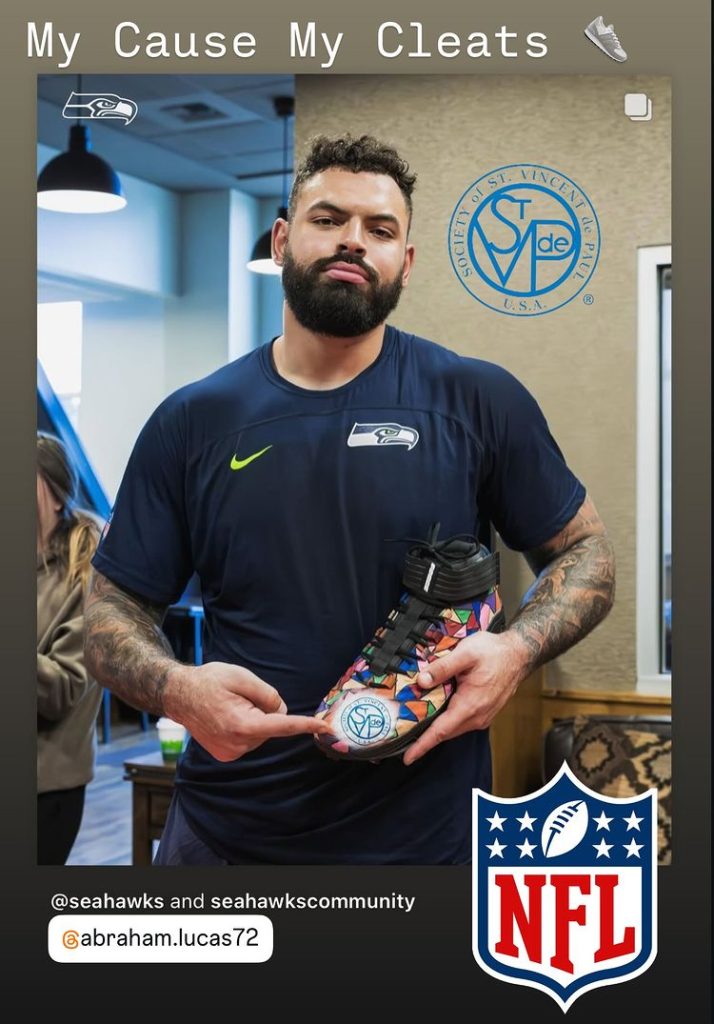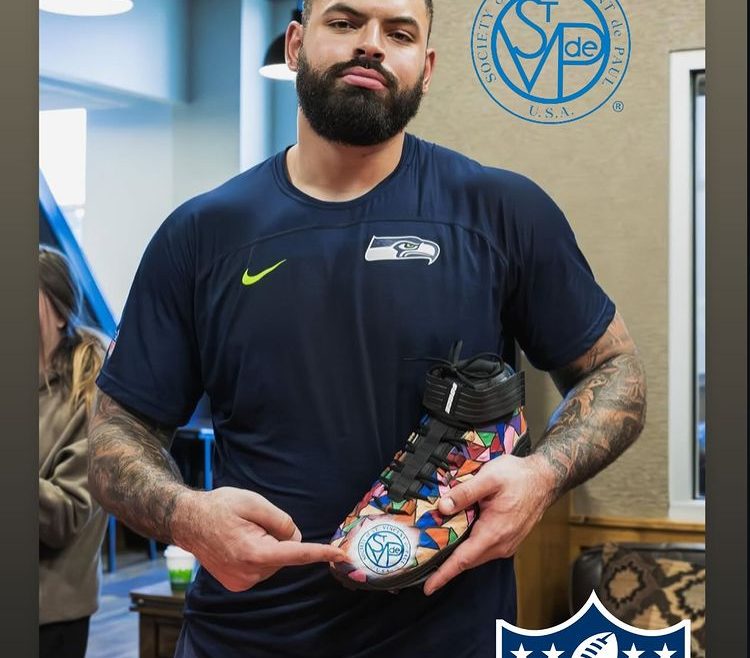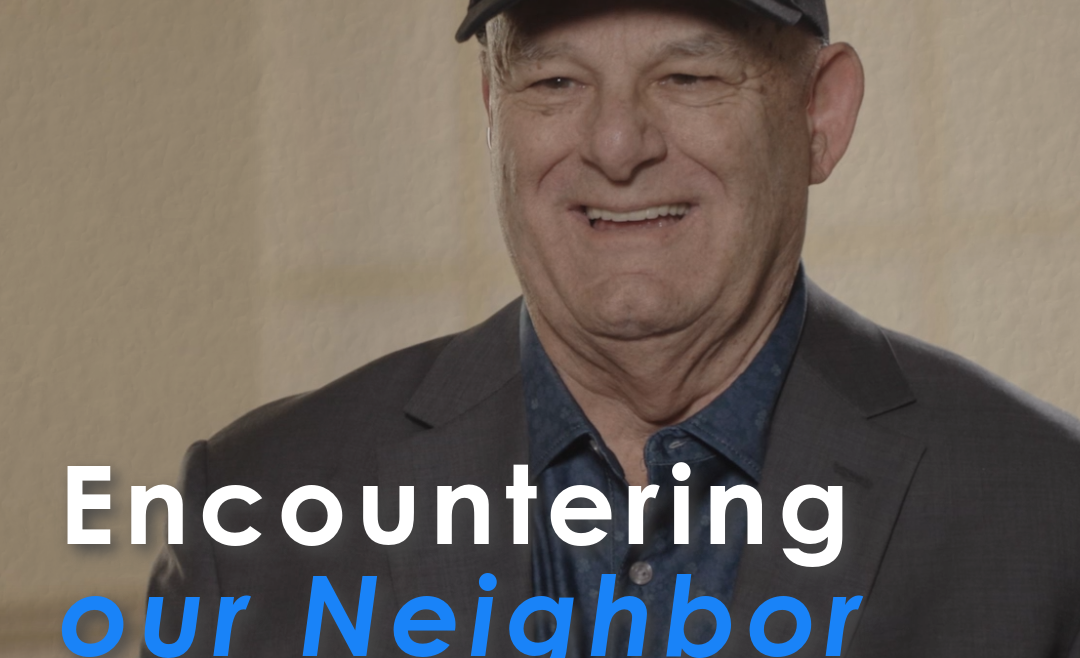 NFL Players wear custom cleats to support St. Vincent de Paul USA
NFL Players wear custom cleats to support St. Vincent de Paul USA
During Weeks 13 & 14 of the National Football League games of the 2024 season, NFL players are wearing custom designed cleats in honor of a cause near and dear to their heart. This initiative is through the My Cause My Cleats campaign.
We are grateful for the support of NFL football players Abraham Lucas with the Seattle Seahawks, Jon Runyan with the New York Giants, and Zach Tom with the Green Bay Packers. These spectacular players are taking philanthropy to the next level by wearing custom designed SVdP cleats in honor of the Society of St. Vincent de Paul USA!
The custom designed SVDP cleats worn this season by NFL player Jon Runyan, Guard for the New York Giants, are open for bidding through December 31st. BID NOW to get your hands on this original pair of shoes: https://givebutter.com/c/svdpusa_runyan



 The Society of St. Vincent de Paul USA’s CEO Michael Acaldo was recently featured on the weekly podcast Yes Catholic.
The Society of St. Vincent de Paul USA’s CEO Michael Acaldo was recently featured on the weekly podcast Yes Catholic.






